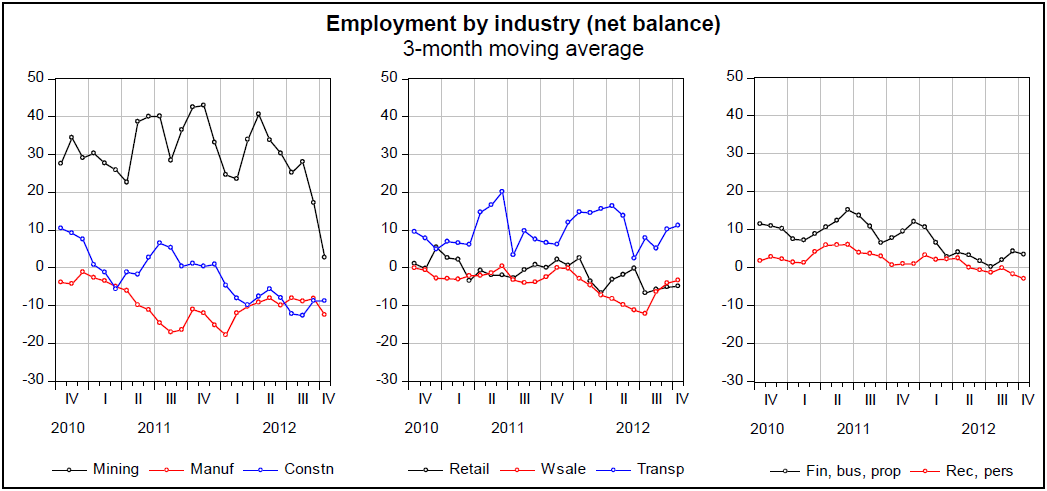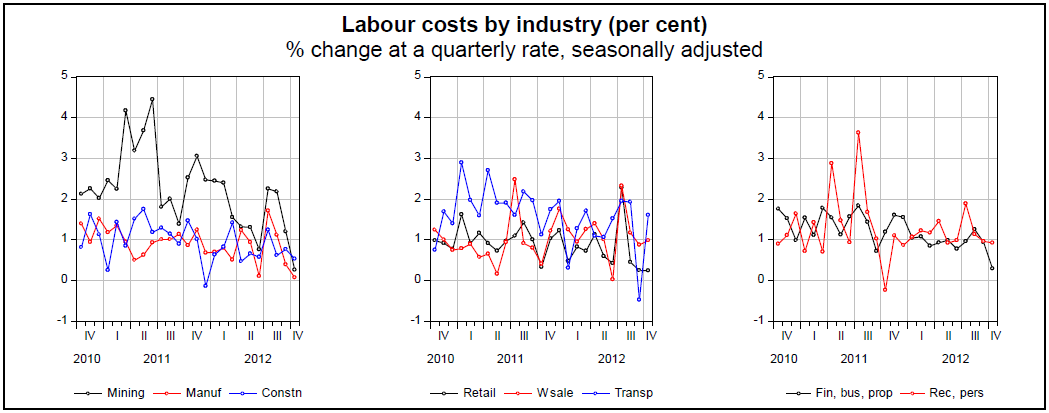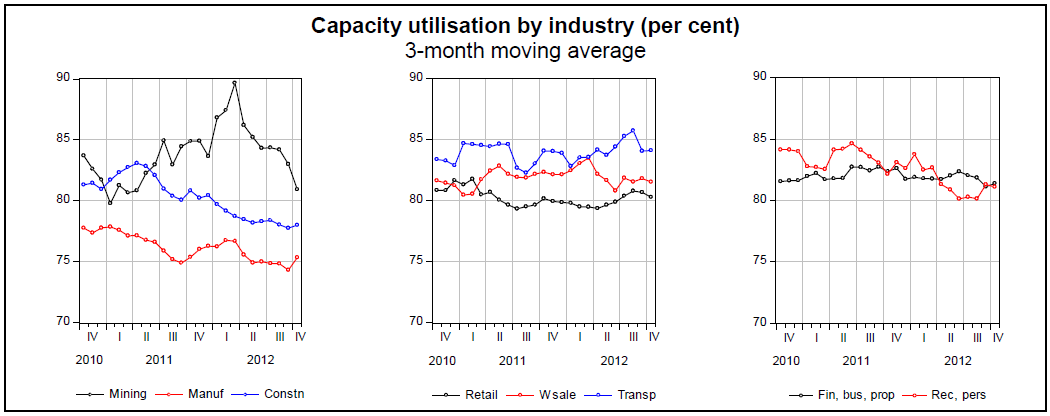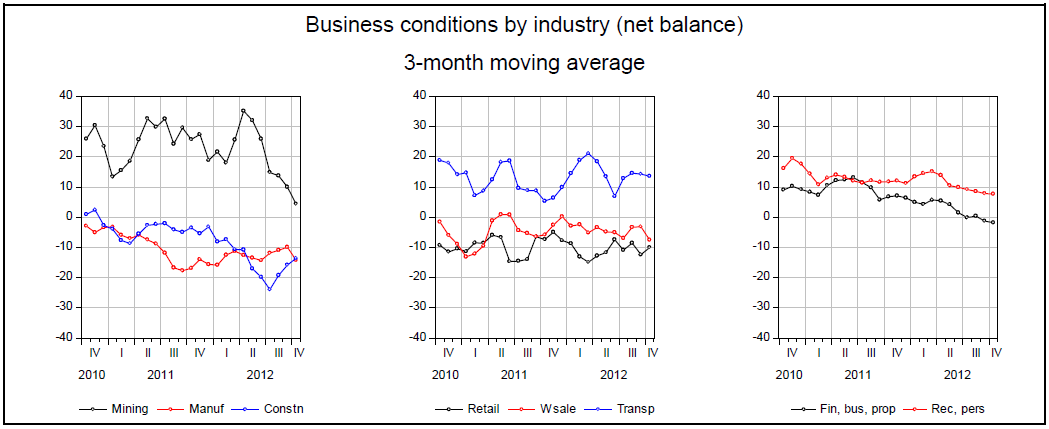If you wonder why I called for a rate cut in the last meeting, wonder no longer. Today’s NAB survey shows a bust is underway in mining:
Business conditions stumble to weakest level in more than three years, with wholesale and manufacturing conditions especially subdued. Capex index points to further softening in business investment, credit demand fell to record levels, while forward looking indicators suggest Q4 clearly below trend. Confidence also edges lower. Activity forecasts unchanged but 25bp February rate cut on the cards, providing modest Q4 CPI.
Business conditions fall further in October, recording their weakest outcome since May 2009. It is likely that persistently weak confidence is having a material impact on demand conditions in the economy at present.
- The softening in activity was driven by broad-based declines in employment, profitability and trading conditions. Conditions deteriorated heavily to very low levels in wholesale, manufacturing and construction while retail remained weak. Transport and recreation & personal services were fairly positive but mining softened. Conditions in Queensland are the lowest level since the 2011 floods and NSW is the weakest in 3½ years.
- Businesses were more downcast in October, with the pessimism particularly apparent in the mining and construction sectors. It appears that the RBA’s decision to lower the cash rate by 25 bps to 3.25% at its October meeting failed to improve sentiment, with firms instead likely to be focussing on the reasons for the rate change – a softening global economy, fiscal tightening, a soft labour market and high AUD.
- Consistent with fairly uninspiring activity readings, indicators of future demand (forward orders, capital expenditure and capacity utilisation) were poor and point to continued soft near-term demand. The survey’s capital expenditure index fell to its lowest level since August 2009, suggesting the brakes may be tightening on the business investment boom – especially mining. Overall, the survey implies a pronounced slowing in underlying demand and GDP growth in December quarter 2012, to around 2¾% and 2-2¼% respectively – clearly below trend.
- Labour costs growth eased again in October, consistent with a softening in employment conditions. Product prices growth remained subdued, while purchase costs pressures rose a touch. Retail prices growth was weak.
Here are the components:

Trading, profitability, conditions all down. Forward orders, stocks and exports all still in the dunny. Confidence down a bit and who cares. Here is the headline index charted:

That’s a post-GFC low. Of course, the biggest number of all is employment, which fell sharply to -5. Bloomie doesn’t track this sub-component but it also fell to a post-GFC low. I’ve applied ANZ jobs to the chart instead. And where is the weakness coming from? You guessed it:

Which means anyone worrying about inflation right now has rocks in their head:

And there is no pick-up yet in any alternative growth sector:

Though some hope in construction:

We’re seeing the leading edge of a mining bust here. The only question is how big?

